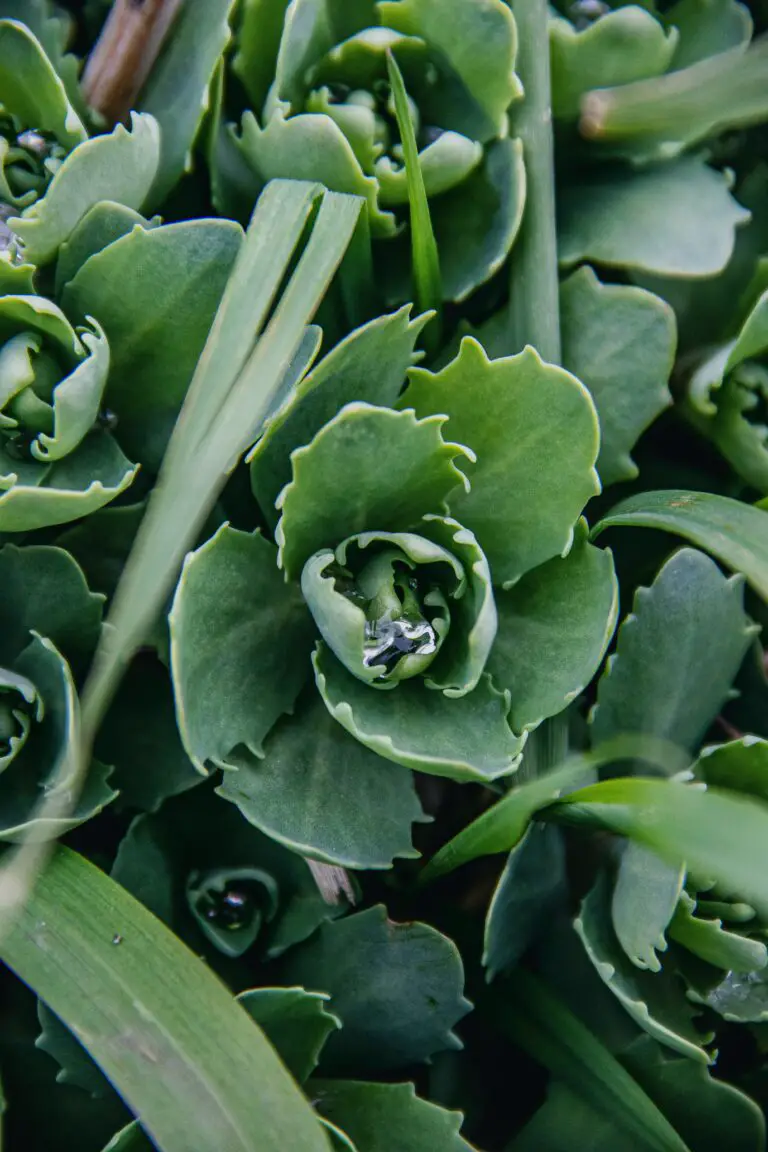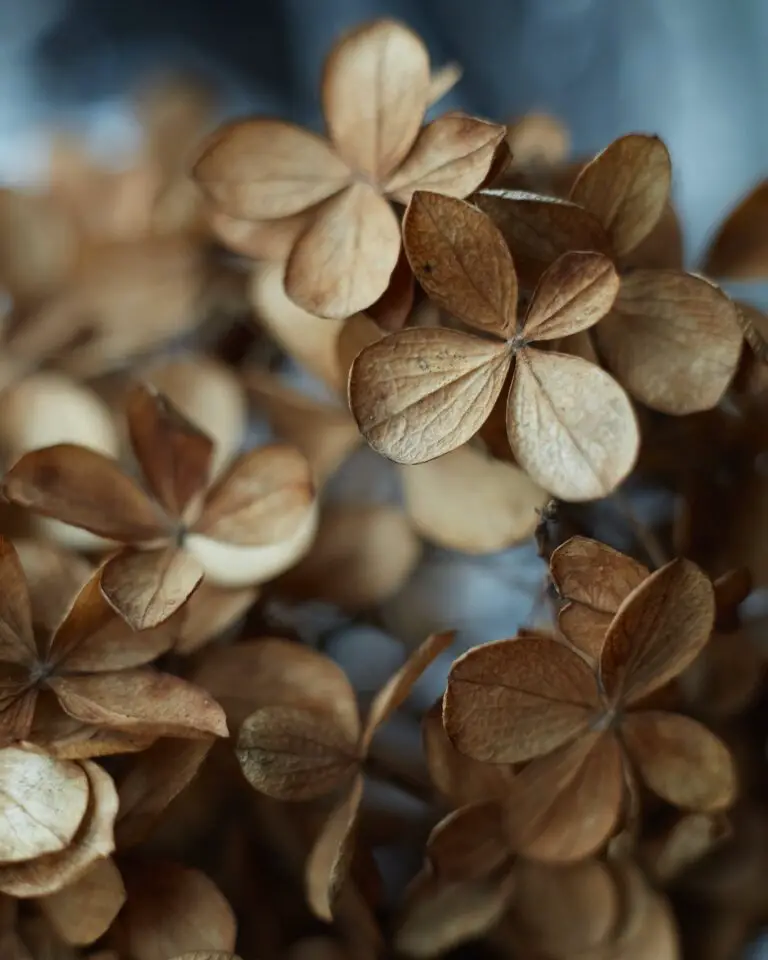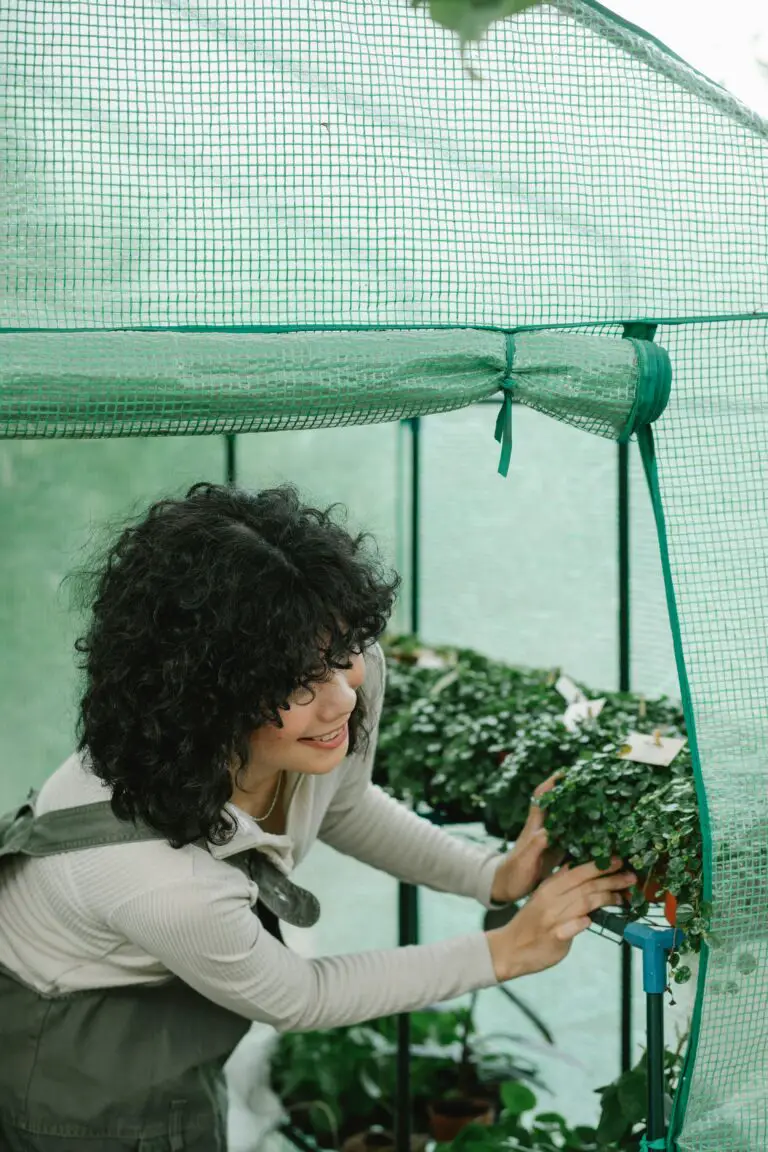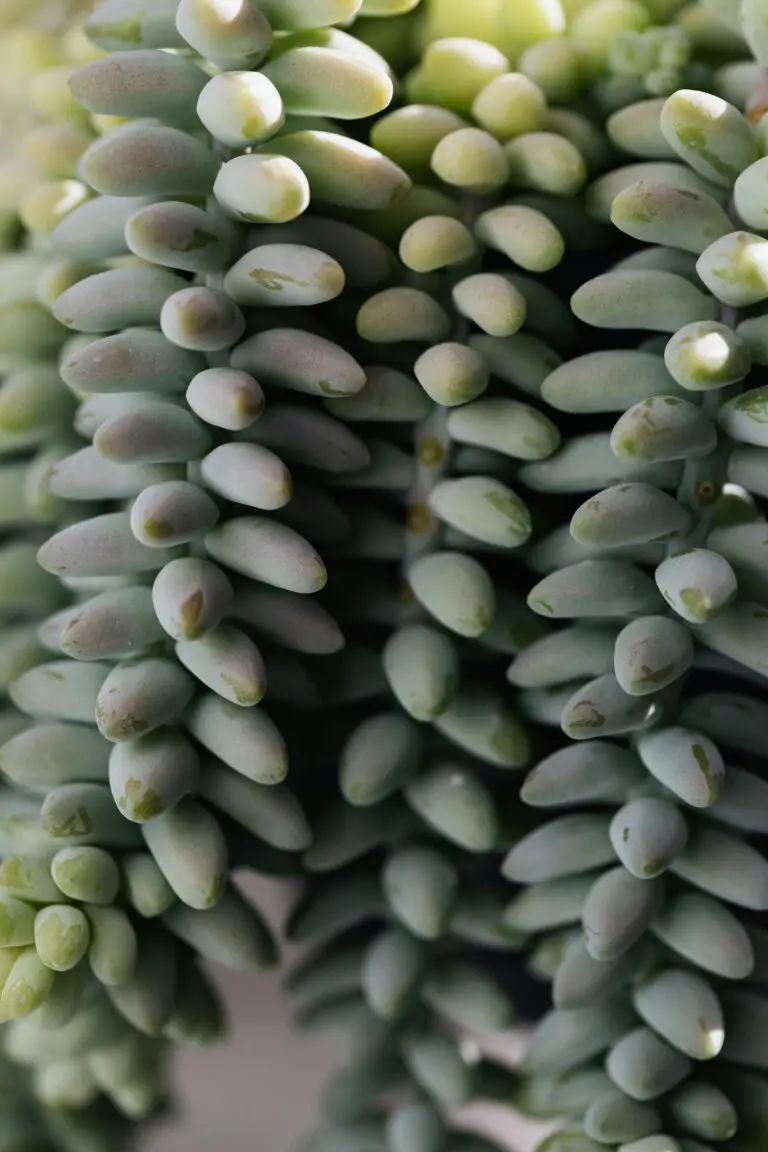Introduction to Sedum Care
Welcome, green thumbs and garden enthusiasts alike, to the secret world of sedum plants! These tough-as-nails beauties have earned a top spot in the hearts of gardeners everywhere. Why, you ask? Their hardiness and low-maintenance nature make them practically the superheroes of horticulture. Imagine plants that shrug off neglect with a sassy, “Is that all you got?” attitude. That’s sedums for you! So, when the crisp fall air sets in, it’s only natural to wonder about the best ways to prepare these resilient champs for the winter and set the stage for a stunning spring comeback.
Before we dive into the nitty-gritty of fall care, let’s paint a picture: a bed of sedums adding an effortless splash of color to a garden, their lush leaves and starry flowers joyfully basking in the sun. If you’re lucky enough to have a plot of these gems, you’ve seen how they can transform a garden into a dazzling tapestry. Now, think of fall care as the meticulous work of an artist ensuring that every stroke will shine even brighter in their next masterpiece. In this case, our canvas is the soil, and our palette is a well-timed trim. Intrigued?
But hold your clippers! Before you start snipping away at your sedum, expert guidance is essential to ensure you’re promoting vitality without putting the plants at risk. After all, there’s a method to the madness of fall care, and it’s all about timing and technique. It’s the difference between a sedum that sulks under a blanket of snow and one that snoozes soundly, dreaming of radiant blooms to come.

All set to learn how and when to trim your faithful sedums? Stay tuned as we reveal the secrets to keeping your sedums snug and secure through the chilly months—and ready to explode with growth when the world thaws. It’s going to be a game-changer for your garden!
The Debate: To Trim or Not to Trim
Gardeners, green-thumbed hobbyists, and succulent lovers often find themselves at a crossroads when fall sets in: the question of whether to trim sedum or not. There’s a quiet debate rustling through the leaves of botanical circles and backyard gatherings, pitting the pro-pruners against the conservationists of the natural silhouette.

On one hand, those in favor argue that fall pruning promotes a tidier appearance, preparing the plant for a robust comeback in spring. They’ll tell you tales of healthier, more vigorous growth and a display of resilience against the cold. For example, think of the gardener who meticulously trims his sedum, speaking proudly of the plant’s rejuvenation every year—a testament to the benefits of a well-timed snip.
Contrarily, purists believe in letting nature take its course. They’ll weave stories about the beauty of frost-kissed sedum heads, untouched until spring’s thaw—and they’re not wrong. There’s a charm to the natural decay that autumn brings, wherein lies a unique aesthetic and a refuge for wildlife. It’s not uncommon to see a gardener smiling contentedly at the sight of birds perching on the sturdy seed heads left behind.
The benefits of trimming are not unfounded. Thinning out the sedum can improve air circulation, potentially decreasing the risk of disease and giving the plant a boost in tough weather. Yet, those against the cut might highlight the appeal of the untouched structure that adds an artistic touch to the wintry landscape. For inspiration, take a stroll in a garden where sedum is left to stand tall, and you might glimpse a world of subtle beauty, frozen in time.
Ultimately, the decision to trim or not is a gardener’s prerogative, a signature on their canvas of green. Whether wielding shears or admiring the serene art of decay, each choice reflects a philosophy of life and growth. The colorful spectrum of opinions makes for a rich tapestry in the gardening world, and whatever side one might lean towards, it’s undeniably a conversation enriched with passion and a love for the quiet corner of earth we call the garden.
The Right Time to Trim Sedum in Fall
If you’ve nestled into the gardening world, you’ve likely heard some buzz about trimming sedum. Now, you might be scratching your head, wondering if fall is the grand stage for your pruning shears or if you should let your sedum bask in its full glory a bit longer. Sit tight, green thumbs, because I’m about to serve up some fresh insights on when to give your treasured sedum collection that seasonal trim.
Imagine this: your sedum has just spent the sunny days of summer strutting their lush foliage and bejeweled flowers, and now autumn’s crisp breath is whispering through the leaves. You question, “Is this sedum’s curtain call?” Yes and no, my fellow plant whisperers. The truth lies in the delicate dance between variety, vigor, and your local vibe – aka climate.
Some sedum stars, particularly the stout and upright types draped in autumn charm, shouldn’t take a bow too early. Extend their encore by waiting until late fall or even early winter when they’ve completed their performance – the seed heads and stems provide both winter interest and a buffet for local wildlife. However, if your sedum is a low-growth showstopper, a light trim in late fall can help maintain its form without cutting into next season’s act.
Local climate takes center stage here. If you’re chilling in a region that slaps succulents with soggy winters, a pre-winter trim might be your front-row ticket to preventing rot. Conversely, if your winters are milder than a backstage greenroom, letting nature run its course could be your encore. For those hands-on with their horticulture, you might want to lurk around our garden of wisdom for more plant care tips.
Stay sharp: timing, technique, and a touch of Mother Nature’s whimsy will ensure your sedum steals the show again next season. Just remember, don your gardening gloves when the time is right, and your sedum will stand ovation-ready come spring!

Step-by-Step Guide to Trimming Sedum
As the leaves start to catch the autumn breeze, you might be wondering about your sedum plants. To snip or not to snip? That is the question gardeners grapple with when it comes to fall trimming. But fear not, for I’m about to unveil the ins and outs of giving your sedum the perfect fall haircut.
First off, we start with the gear. Don’t just grab any old tool from the shed; make sure you have a sharp pair of gardening shears. A clean cut is important to prevent any damage that can make your plants vulnerable to diseases. It’s much like how we feel after a good trim—fresh and ready to take on the world, or in this case, the colder months ahead.

When it comes to protective gear, let’s keep it simple. A sturdy set of gloves to avoid the ‘ouch’ moment from a prickly stem, and ideally, some eyewear because you never know when a rogue branch decides it’s time to take flight.
Now, let’s talk about the process, shall we? Find the sedum’s “line of lushness”—this is where the full, healthy leaves are. You’ll want to trim just above this line. Imagine you’re giving your sedum a trendy haircut; you’re aiming for that neat yet natural look that says, “I woke up like this”.
While we’re at it, here’s a real-life example for you. Last fall, my neighbor’s sedum was looking a bit forlorn, stretching out in all directions like an unplanned city. With some gentle coaxing and strategic snipping, we managed to redefine its shape. Come spring, it was the star of the cul-de-sac, sprouting with such conviction, it nearly put the tulips to shame!
If you’re looking for more pruning tips for healthy growth, there’s a treasure trove of information available to ensure your garden is always in top-notch condition. Now, back to our sedum.
The best time to embark on this trimming quest is when the plant starts to look a bit weary after blooming and the cooler weather sets in. It’s like they’re asking for one last pamper session before their winter nap. And trust me, they will reward your efforts come spring with vibrant, enlivened growth.
Remember, your sedum needs love, but it also craves precision. Follow these steps, and you’ll have a garden that’s the envy of all—full of sedum that’s trimmed to perfection, ready to brave the fall and rise majestically in the spring.
Common Mistakes to Avoid When Trimming Sedum
Have you ever taken your shears to your beloved sedum, only to find it looking sadder than a sun-starved succulent in mid-November? You’re not alone! Pruning sedum plants can sometimes end in a horticultural horror story when done indiscriminately. To help you steer clear of the common blunders, let me walk you through the “oops” moments every sedum lover should dodge.

First things first, timing is everything. Whipping out the shears as soon as the leaves start to fall is a knee-jerk reaction you’ll want to curb. Sedum needs that extra foliage to gather all the sunlight it can before the winter dormancy. A good rule of thumb? Don’t rush the cut!
Now, let’s talk technique. It’s all too easy to go from trim to total buzzcut in the blink of an eye. The goal is to give your plant a haircut, not a close shave. Think of it as styling your hair, not preparing for boot camp. Be gentle, be sparing, and, above all, be strategic with those snips to avoid a balding sedum come springtime.
Overshooting the Mark
Ever heard of the saying ‘less is more’? This adage applies to sedum pruning as well. Some enthusiasts get so snip-happy that they overshoot the mark, leaving the plant with minimal protection against the frosty onslaught of winter. A conservative approach ensures your sedum stands a fighting chance when the cold winds howl.
Avoid the “Flat-Top” Fiasco
Creating a sedum “flat-top” might sound like a trendy move, but it’s a botanical blunder of epic proportions. When you level the top, you risk removing the burgeoning buds that are destined to bloom the following season. Instead, aim for a natural, uneven look that encourages varied growth rather than a plant that looks like it was in the path of a lawnmower.
“One Size Fits All” Fallacy
And please, don’t fall victim to the “one size fits all” fallacy. Different sedum species call for different pruning approaches. A ‘Autumn Joy’ won’t take kindly to the same treatment as a ‘Dragon’s Blood’. Knowing your varieties is like knowing your children – you’ve got to cater to their individual needs if you want them to thrive.
By watching out for these pruning pitfalls, you’ll navigate the delicate dance of fall sedum trimming like a seasoned pro. Keep these tips in your gardening toolkit, and come spring, your sedums will reward you with a riot of colour and life, as if to say, “Thanks for not going Edward Scissorhands on me!”
Benefits of Trimming Sedum in the Fall
When the autumn breeze starts whispering through your garden, it may be prime time for a little ‘sedum-scaping’. That’s right, we’re talking about giving those fleshy, vivacious sedum plants a trim as the season turns. But why wield the shears as the leaves start to fall? Let’s dive into the myriad advantages that fall trimming beckons for your beloved sedums.
Promoting New Growth for a Lush Spring Awakening
Trimming your sedum in the fall isn’t about depriving them of their current grandeur; it’s about setting the stage for a resplendent spring performance. Removing spent stems and blooms encourages fresh growth. Imagine it as sparking a little fire under your sedums to revivify with vigor once winter’s snow has melted and spring’s first blush graces the garden.
Preventing Disease: A Clean Cut to a Healthy Life
Let’s get real: diseases and pests love a good neglected plant, and overgrown sedum is no exception. Fall trimming helps eliminate hiding spots for critters and trims away any diseased parts, which might otherwise infect the plant through the damp winter. Think of it as a preemptive strike, keeping your sedum hearty and hale through the chilly months.
Maintaining Plant Shape: The Art of Garden Aesthetics
Aesthetically, there’s something deeply satisfying about a well-maintained garden. Trimming sedum helps preserve that intentional design, preventing the plant from becoming lanky or sprawling into walkways or other plant beds. It’s like sculpting with nature, crafting a visual feast for the eyes and ensuring your sedum strikes just the right pose in your garden tableau.
And hey, why not see for yourself how a little fall snip can transform your garden? Check out this video for some hands-on inspiration:
By now, you’re likely seeing that a bit of fall care for your sedum sets you up for an even more spectacular garden come spring. So, don’t hesitate when you see those shears calling your name from the tool shed; your sedum will thank you, with blooms that turn the heads of every passerby when the world awakens anew!
Protecting Your Sedum Post-Trimming
Just like tucking in your garden for a good night’s sleep, protecting your sedum after a fall trim is all about providing it with a cozy environment to thrive in winter’s chill. Think of it as wrapping your plant in a snug blanket. But instead of fleece or cotton, we use mulch! Spreading a layer of organic mulch around your sedum can act like a thermal coat, keeping the soil temperature more consistent and buffering against the freeze-thaw cycles that can heave roots from the ground. Imagine mulch as a temperature regulator, similar to how you’d adjust the thermostat to keep your home comfortable during a snowstorm.
Here’s where hydration comes into play, and I’m not talking about a leisurely drip through a soaker hose. Give your sedum a good drink before the ground freezes, as you would quench your thirst before a long journey, ensuring it has enough moisture reserves to last through the dry, cold months. Be cautious, though – water logged soil is the equivalent of wet socks on a cold day, absolutely unpleasant and a recipe for root rot.
Now, let’s discuss the winter armor. In areas where winter is more a beast than a beauty, consider shielding your sedum with a winter cover. This could be a burlap wrap, much like you’d don a scarf to protect against biting winds, or a strategic lean-to that wards off the weight of a heavy snowfall – preventing your cherished sedum from becoming the hunchback in your garden drama.

When spring peeks its head around the corner, gently pull back the winter protections like lifting the curtains on a new day. Allow your sedum to wake up slowly, with the sun as its gentle alarm clock, and ease into the warmer temperatures. If you’ve done your job right, your sedum will stretch out its leaves refreshed, ready for a new season of growth – a testament to your nurturing through the harsh winter.
Should You Let Sedum Seed? Pros and Cons
When it comes to gardening, sedum presents a delightful conundrum—should you trim it back in the fall or let it go to seed? As with most plants, allowing sedum to go to seed has both advantages and disadvantages, depending on what you hope to achieve in your garden. Let’s delve into what happens when you let these robust beauties take their natural course.

For starters, permitting your sedum to seed can be a boon for local wildlife. The seed heads provide a feast for birds and offer sanctuary for beneficial insects seeking shelter as the seasons change. Picture this: a brisk fall day, your garden abuzz with life as finches dart from stem to stem, gleaning the last bounty before winter sets in.
Aside from ecological benefits, there’s also an aesthetic angle to consider. The skeletal remains of sedum seed heads stand like natural sculptures amidst the frosty garden landscape. Their textural contrast against the snow can create a visually stunning tableau—an often underappreciated aspect of winter gardens.
On the other hand, allowing sedum to go to seed may lead to a sowing spree, with young sedum plants springing up wherever the wind carries them. While this might sound like a gardener’s dream, think again. It could mean extra work come spring, as you may need to rehome these volunteer seedlings or risk a sedum takeover!
Moreover, there’s the plant’s health to consider. If left unchecked, some varieties could exhaust themselves by producing seeds, resulting in a weaker plant come spring. This means you might be dealing with a less vigorous comeback or the need for more TLC to restore your sedum to its former glory.
Ultimately, the decision to trim or not to trim sedum in the fall is a balance between personal aesthetics, garden management, and ecological considerations. Each gardener must weigh the pros and cons and decide what’s best for their slice of paradise.
Frequently Asked Questions
When the air turns crisp and the leaves start to don their autumnal hues, gardeners begin to wonder, “Should I trim sedum in the fall?” You’re not alone in pondering this question; it’s as common as the falling leaves! Let’s dig into the nitty-gritty of fall sedum care.
Is Fall the Right Season to Trim Sedum?
Imagine this: You’ve nurtured your sedum all summer, and they’ve rewarded you with their lush foliage and captivating blooms. But as the days grow shorter, you notice the once vibrant stems starting to look a tad tired. This is Mother Nature’s nudge – it’s time for a trim! Snipping back your sedum in the fall can set the stage for a splendid show next year. So, yes, giving your sedum a little haircut this season is not only okay, it’s encouraged!
The Benefits of a Timely Trim

Why should you consider trimming sedum in the fall, you ask? A fall trim is like pressing the refresh button on your garden. It prevents your sedums from getting too leggy and encourages a bushier growth come spring. Plus, it can help reduce the risk of fungal diseases that thrive on dead plant material during the wetter months. It’s almost as if you’re tucking your plants in for a long winter’s nap – snuggly and secure!
How Much Should You Trim?
Think of trimming sedum like styling hair – you want to remove the right amount to enhance their natural beauty. A general rule of thumb is to cut back about a third of the plant. This way, you encourage fresh growth without sending the plant into shock. It’s the perfect balance between giving them a shape-up and preserving their hardiness for the colder days ahead.
Do All Sedums Need a Fall Trim?
While most sedum varieties benefit from a fall trim, let’s not wield our pruning shears with reckless abandon. Some species, particularly the ones with seed heads that provide winter interest or food for the birds, might appreciate being left alone. A good strategy is to observe your garden’s unique ecosystem and make a judgment call. If your sedum is part of a winter wildlife buffet, consider postponing your trim until early spring.
Trimming Techniques to Maximize Plant Health
It’s not just about when to trim, but also how. Use clean, sharp tools to make precise cuts. And always trim on a dry day to prevent the spread of disease. Remember to mulch around the base after trimming; this helps to insulate the roots and conserve moisture. By following these simple tips, you’re not just trimming – you’re performing a ballet of botanical care that sets your sedum up for success!
So, as you sip your pumpkin-spiced beverage and admire the autumn tapestry in your garden, rest assured that a thoughtful trim of your sedum plants this fall is a step in the right direction. Stay tuned to your plants’ needs, and you’ll be on the path to perennial perfection.



